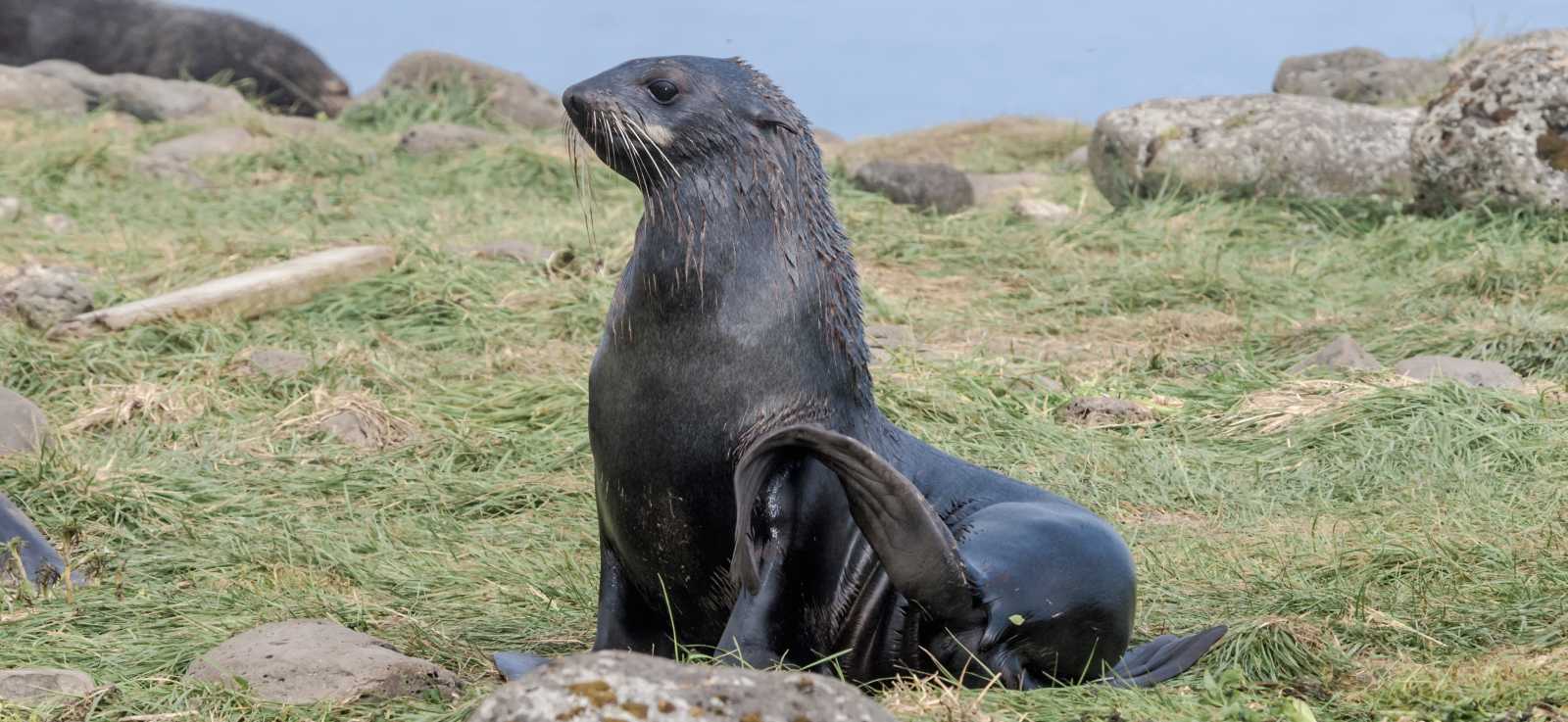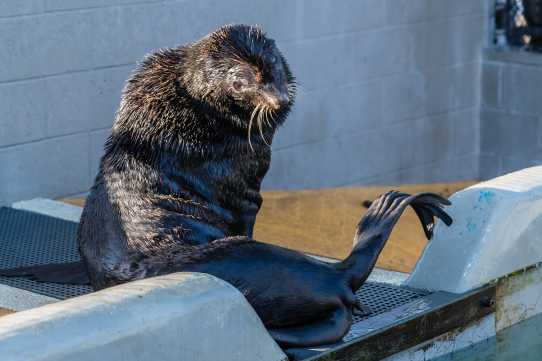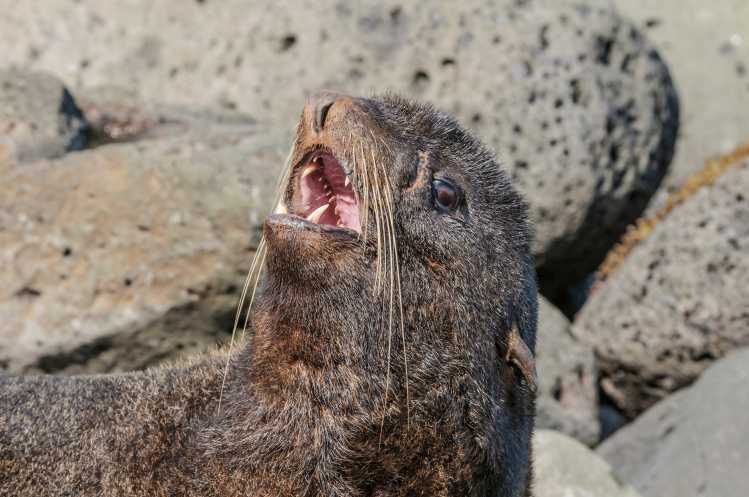
Northern Fur Seal
Callorhinus ursinus
Learn More About Northern Fur Seals
Europeans first named northern fur seals "sea bears." In fact, their scientific name, Callorhinus ursinus, means "bear-like." This is likely due to their thick fur coat, which is so dense that it has 300,000 hairs per square inch. Similar in appearance to sea lions or Guadalupe fur seals, the northern fur seal does have a few distinctive characteristics such as long ear flaps and a shallow, pointed snout.
Pups are born with a black pelt, and as they get older their coat becomes dark brown with lighter coloration on their chest and belly. You can normally tell an adult male apart from the females because they also have gray hair on the backs of their necks.
Males are also much larger than females, even at birth. Male pups weigh 12 pounds and grow to be 385 to 605 pounds and 7 feet in length. However, female pups only weigh 10 pounds, growing to 66 to 110 pounds and 4.5 feet in length.
What do they sound like?
Meet Our Patient: Inky
Northern fur seal Inky was found weak and starving, although you might not have suspected it since he weighed over 215 pounds when admitted. Inky is the largest northern fur seal ever cared for at our hospital, but still weighed about half of what he should have as an adult male.
Lab results confirmed that Inky was suffering from domoic acid, a potentially deadly neurotoxin. Luckily, he was rescued before any significant damage was done. Veterinarians flushed the toxin from his system, and after being granted a clean bill of health, Inky was released back to his ocean home.

The greatest threats to marine mammals are caused by people, but we can also be their greatest champions.
Sign up for email from The Marine Mammal Center to stay updated on how you can be an advocate and champion for marine mammals like northern fur seals.
Habitat & Population Status
Northern fur seals are a pelagic species, which means they spend almost all of their time in the open ocean, coming ashore to breed or if they are sick.
This species’ full range extends throughout the Pacific, from Japan to the Channel Islands of California, with their main breeding colonies found in the Bering Sea. Smaller rookeries, or breeding grounds, are found on the Kuril Islands North of Japan, Robben Island in the Sea of Okhotsk and on San Miguel Island off of Southern California.
The Farallon Islands off the California coast were also a breeding area before this species was hunted extensively for their luxurious fur in the late 1800s. After more than 100 years, the first pup was born there in 1996 and by 2006, the Farallon Islands became an established rookery once again.
Northern fur seals are now protected under the Marine Mammal Protection Act, with the eastern Pacific population listed as depleted under this law. This means that it is illegal to kill them except for research or native subsistence.
The current population of northern fur seals is estimated at 1.1 million globally, but is declining. It’s suspected that commercial fishing operations are contributing to the decline by decreasing availability of fish and increasing the likelihood of entanglement in fishing gear.
Northern fur seals are especially sensitive to changes in their environment, as seen in the record numbers of sick or starving fur seals rescued and cared for at our hospital during years when we have seen El Niño conditions.

Breeding & Behavior
Male northern fur seals arrive at rookeries to establish territories in late May to early June. Females arrive in June and a few days later give birth to pups they’ve been carrying for the past nine months.
Mothers nurse their newborns for about 10 days, then go to sea to feed for four or five days to find food. After that initial nursing period, they feed for eight to 10 days and nurse for one to two days. About four months on this cycle, the pups wean from their mothers—this behavior is seen in all otariids, or eared seals.
Out in the open ocean, northern fur seals feed on small schooling fish, such as walleye pollock, herring, hake, anchovy and squid. Although they feed on fish found in the open ocean, they are not deep divers like northern elephant seals, with typical dives reaching just 200 feet. Their maximum dive depth has been observed to reach about 600 feet.
As a pelagic species, these marine mammals have developed a unique behavior that allows them to rest at sea. Called "jughandling," it involves keeping the front and rear flippers out of the water while bobbing on the surface.
















